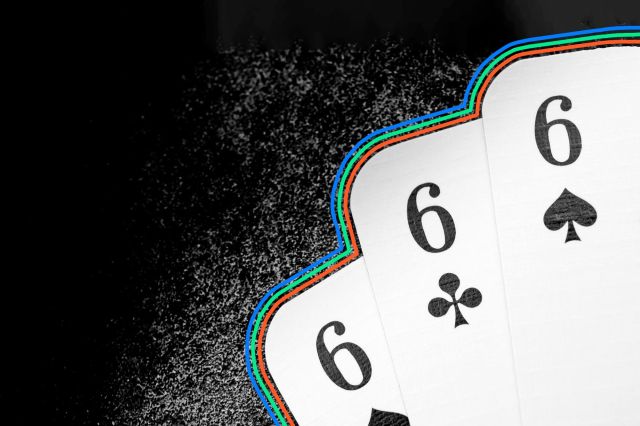
Knocking on Wood
In the United States, we say “knock on wood” (in the U.K., it’s “touch wood”) in a variety of situations, like after mentioning something we hope will happen, or while discussing something good that we want to remain in a positive place. It’s a means of averting misfortune, making sure we don’t “tempt fate.” Some explanations for the practice mention a Celtic or otherwise pagan association with tree spirits, the idea being that knocking on wood (particularly once-sacred trees like oak and ash) might awaken these deities and confer their protection. Others note a Christian association with the wood of the cross.
But the origins of this practice are probably much more modern, and banal. In A Dictionary of English Folklore, scholars Jacqueline Simpson and Steve Roud note that the earliest known reference to the practice only dates to 1805. It seems linked to 19th-century children’s games like “Tiggy Touchwood” — types of tag in which children were safe from capture if they touched something wooden, like a door or tree.
In his book The Lore of the Playground, Roud writes: “Given that the game was concerned with ‘protection,’ and was well known to adults as well as children, it is almost certainly the origin of our modern superstitious practice of saying, ‘Touch wood.’ The claim that the latter goes back to when we believed in tree spirits is complete nonsense.”

Black Cats
In some parts of the world, black cats are considered lucky, but in the U.S. they’ve often been associated with evil. The link goes back to a medieval conception of cats, the devil, and witches as one big happy family. Some sources claimed that Satan’s favorite form to take was a black cat, while witches supposedly either kept cats as familiars or changed into cats themselves. In an age when witches were blamed for just about everything that went wrong, cats — particularly shadowy black cats — were routinely killed.
Sadly, these awful associations were strengthened during the plague outbreaks of the 14th to 17th centuries. The bacteria that causes the plague wasn’t identified until 1894, and without understanding why people were getting sick, villagers doubled down on the idea of cats (and again, especially black cats) as a source of misfortune.
Unfortunately for them, killing cats of any color just helped rats — which carried the type of fleas that spread the plague — proliferate. It would have been far better for their health if European peasants had taken a page from the ancient Egyptians and worshiped their cats instead.

Spilling Salt
Salt is essential to human life and was once an extremely valuable commodity, so much so that the word “salary” derives from it. The crystalline mineral was used in ancient Jewish, Greek, and Roman sacrifices, and it was the primary means of preserving food before refrigeration came along. Over the years, salt became associated with purity, incorruptibility, and sanctity — good for both staving off rot and evil spirits. It stood to reason, then, that spilling salt was bad for both the budget and soul.
During the Renaissance, Leonardo da Vinci strengthened the association between spilled salt and misfortune by depicting Judas with a saltcellar knocked over next to him in his painting “The Last Supper.”
At some point, a belief arose that taking a pinch of salt with the right hand and throwing it over the left shoulder would counteract any bad luck caused by spilling the stuff. The idea comes from an imagined link between the left side and the devil — as well as the idea that Satan just can’t stand salt.
More Interesting Reads

Breaking Mirrors
If you grew up toward the end of the 20th century, you’re almost certainly familiar with the idea that breaking a mirror brings seven years of bad luck. Part of this notion is very old: A variety of ancient cultures believed that one’s reflection could steal bits of one’s soul, and so damaging a reflection could damage a person’s spirit. But folklorists have only traced the idea of bad luck from breaking a mirror to 1777, perhaps because of an association between mirrors, magicians, and “diabolical” divination.
So why seven years of bad luck, specifically? That part only dates from the mid-19th century. It’s not clear exactly where the link came from, but it may be a Roman idea that the body replenishes itself every seven years — meaning that was enough time to lift any curse.

Friday the 13th
This superstition marries ideas about both Friday and the number 13 to create what is supposedly the unluckiest day of the calendar. The aura of doom around the number 13 may go back to early civilizations who based their numerical systems on the number 12. (That’s how we got 12-month calendars and days divided into 12-hour segments, for one thing.) Because it came right after 12, 13 was seen as a problematic or strange leftover.
Odd as it may seem, the association is reinforced by two stories of ancient dinner parties. In Norse mythology, evil was introduced into the world when the trickster god Loki showed up as the 13th guest at a dinner in Valhalla. Judas Iscariot, who betrayed Jesus, was also the 13th guest to arrive at the Last Supper. That led to a belief, starting around the 17th century, that it was unlucky to have 13 guests at a table. Incidentally (or not), it was also imagined that witches’ covens usually numbered 13.
Friday, meanwhile, was the day Jesus was crucified. By tradition, it was also thought to be the day Eve gave Adam the apple and they were cast out of the Garden of Eden. In Britain, Friday was also Hangman’s Day, when those condemned to die met their fate. Somehow, over the centuries, these ideas combined to give Friday a bad rep — at least until TGIF came along.
Yet it was only the Victorians who combined the ideas around Friday and the number 13 to create the idea of Friday the 13th as being uniquely unlucky. Of course, these days the American horror film franchise may have reinforced the idea.

Walking Under Ladders
Like spilling salt, the superstition against walking under ladders may be partly practical. If you see a ladder, there’s a good chance someone is standing on it, and it would be dangerous for both parties if the ladder were bumped or fell.
But most explanations add a religious dimension. These stem from the shape a ladder makes as it leans against a wall — a triangle, which suggests a trinity. In ancient Egypt, triangles were a sacred shape (think of the pyramids), and they believed that to walk through one was to “break” something sacred to the gods. In Christianity, of course, the trinity is also sacred, and the same idea supposedly applied. Furthermore, a ladder was also said to have rested against Jesus’ crucifix, becoming a symbol of misfortune. There’s also an association with the gallows, where a ladder was often placed so people could climb up to the rope.
However, in A Dictionary of English Folklore, Simpson and Roud once again throw cold water on an ancient basis for this belief. They note that the earliest reference to ladders as unlucky is only about 200 years old, and that most of these older explanations are theories that lack any documented evidence.
Crossing Your Fingers
Crossing the middle finger over the index finger “for luck” is one of the most widely understood gestures in the U.K. and the U.S., even if these days we usually say something like “fingers crossed” rather than perform the action.
It’s said — unsurprisingly — that the gesture is a reference to the cross, and anything associated with the cross is supposed to be good luck (or a form of protection, such as saying a prayer while making the sign of the cross). But it may not be as old as it’s often reported: Folklorists have only found reference to it starting in the early 20th century.

666
This one really is old. In the “Book of Revelation,” there’s a prophecy about a “Great Beast” who will rule the planet and mark his followers with the “number of his name” — 666. Commentators have referred to that “beast” as Satan, or the Antichrist. (Coincidentally, these lines come from the 13th chapter of Revelation, for anyone wanting to stack superstitions.)
But the Book of Revelation was written in a code that often referred to the Roman Empire. Some scholars say the three sixes are a reference to the Roman Emperor Nero’s name as spelled out in Hebrew letters, although it requires a bit of forcing. The supposedly Satanic associations have had surprising staying power, however: Even today, phone numbers with 666 are often rejected or considered a joke.











